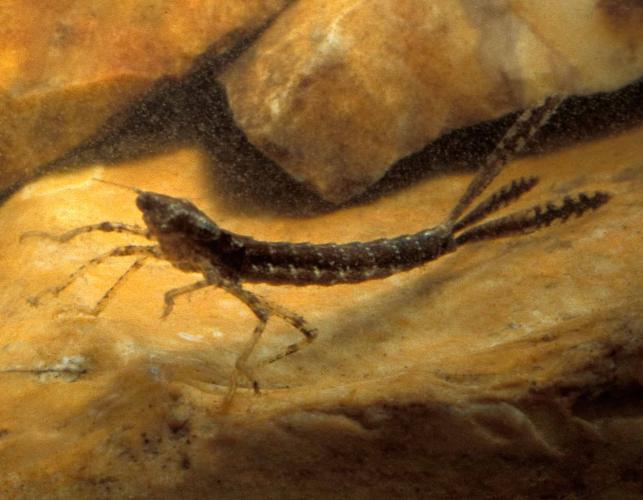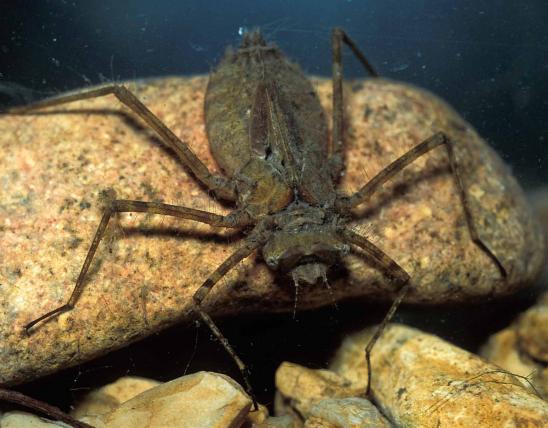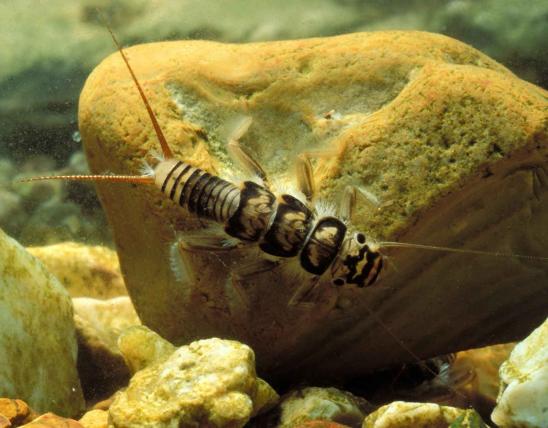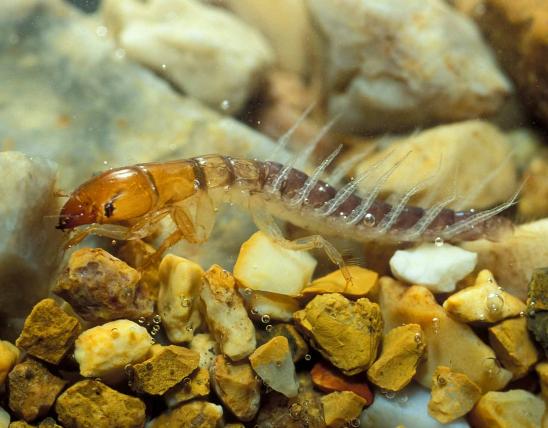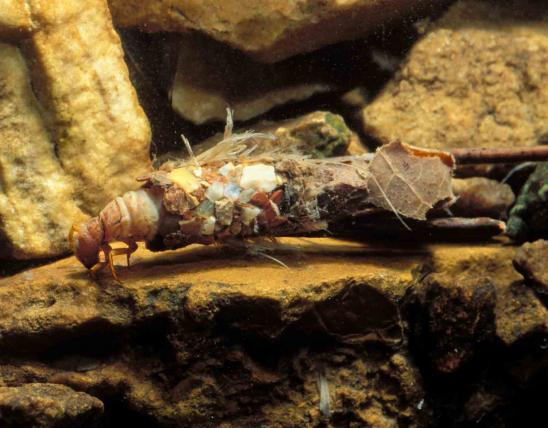
Damselfly larvae (nymphs) are aquatic, slender, usually drab insects, with 6 thin legs, large eyes, and small wing buds on the back of the thorax. The 3 gills are leaflike or paddlelike and positioned in a tripod configuration at the tip of the abdomen (unlike the gills of the related dragonflies, which are hidden within the tip of the abdomen). The lower jaw is scooplike and covers most of the bottom part of the head.
Adult damselflies have very slender, elongated abdomens, delicate bodies, and 2 pairs of wings that are typically held together over the body. The wings are membranous and elaborately veined. The hindwing is about the same size and shape as the forewing. The eyes are compound, large, but usually do not touch. The antennae are short. The 6 legs are poor for walking but good for perching. Many damselflies have brilliant, gemlike colors.
Key identifiers for damselfly larvae:
- Thin aquatic insect, usually parallel-sided, usually drab.
- Six legs that are long, thin, jointed.
- Each leg with 2 claws.
- Large eyes.
- Small wing buds on the back of the thorax.
- Three leaflike gills, in a tripod configuration, positioned at the tip of the abdomen.
- Lower jaw scooplike, covering most of the bottom part of the head.
- There are no feathery gills along the sides or beneath the abdomen.
Larva length: from ¼ to 2½ inches (varies with age and species).
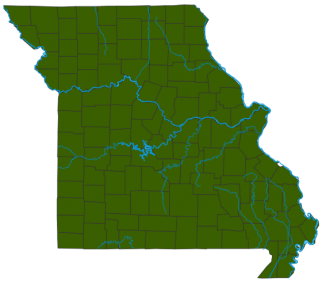
Statewide.
Habitat and Conservation
Damselfly nymphs are common residents of marshes, ponds, lakes, streams, and other aquatic habitats. They crawl among submerged plants and rocks and along the bottoms, searching for prey. They can also swim, by undulating their bodies. Because the larvae are aquatic and the eggs are laid in the water, adult damselflies ordinarily are not found far from water. Their fast flight, however, can take them many places. Adults are usually seen in the warmest parts of the year.
Food
Damselfly nymphs are lie-in-wait predators resting quietly on the substrate or a submerged plant. When a potential meal swims or walks near, the nymph’s extendable, scooplike jaws flash outward to snatch and draw in the food, which can be any aquatic animal smaller than itself. Damselfly adults hold their legs in a basket shape during flight, which is perfect for grasping the small flying insects they eat.
Status
Six damselflies are Missouri species of conservation concern and thus are vulnerable to becoming extirpated from our state: the eastern red damsel (Amphiagrion saucium), Paiute dancer (Argia alberta), sphagnum sprite (Nehalennia gracilis), sedge sprite (N. irene), duckweed firetail (Telebasis byersi), and desert firetail (T. salva).
Life Cycle
Adult males commonly perch on branches or other objects, patrolling their territories, driving away rival males and attempting to mate with females. Mating pairs usually fly in tandem. The female usually flies low over the water, depositing eggs directly on the surface. Larvae (nymphs) undergo several molts as they grow and can take a few years to mature. When ready, they crawl out of the water to a safe place, shed their skin, and emerge as a winged adult.
Human Connections
Anyone who dislikes mosquitoes can appreciate damselflies! Damselflies are also admired for their beautiful forms, and photographers love to capture their images. It should be noted that damselflies cannot sting. When handled, they might try to bite, but it is merely a pinch.
Ecosystem Connections
Most of a damselfly’s life is spent as a nymph. Some species live for 5 years underwater before becoming adults. They and the adult forms are important predators of mosquitoes, midges, and other small insects. The nymphs are important food for fish and other aquatic insectivores.
